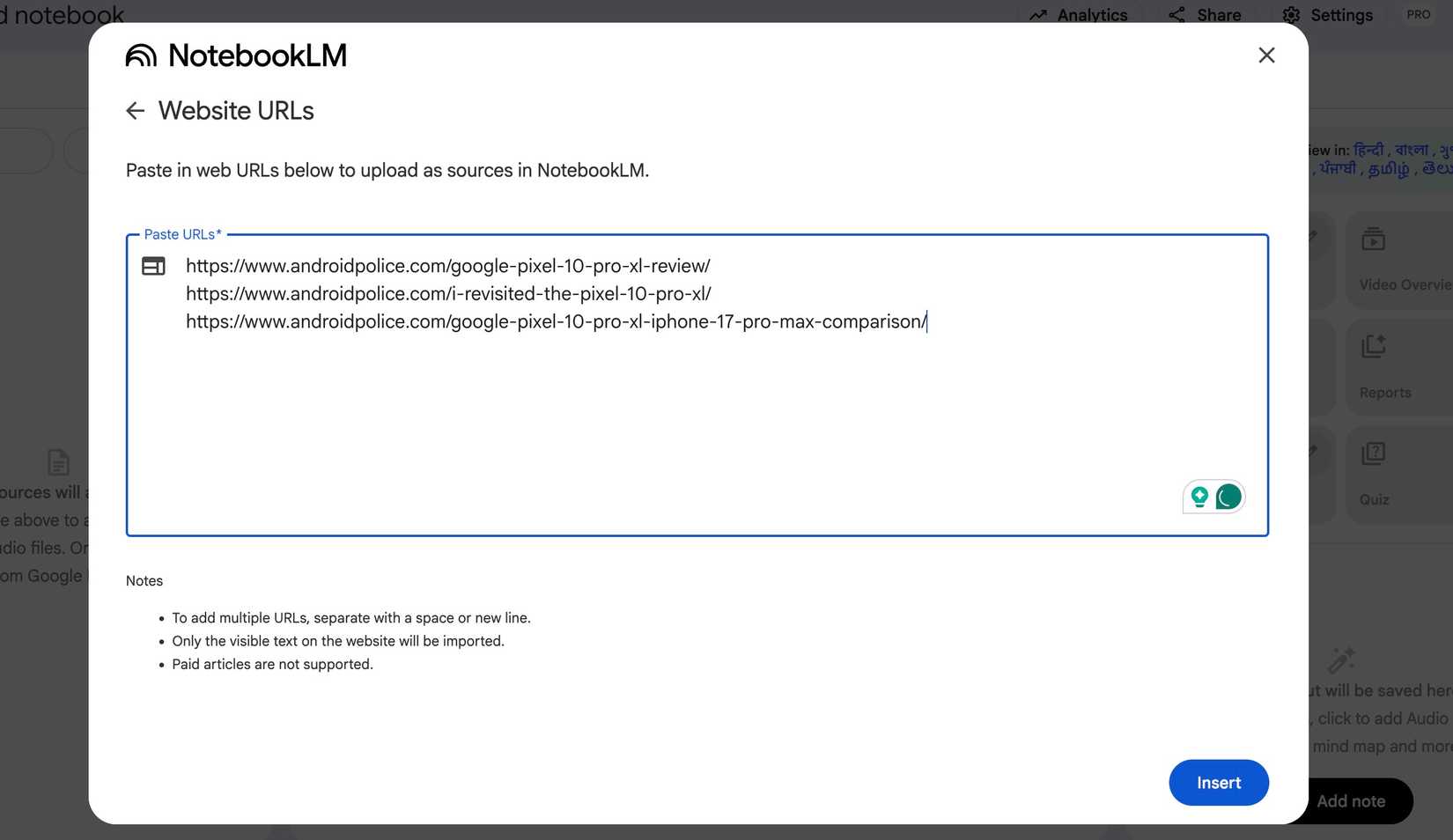For years, buying a new smartphone was a tedious process.
You would go through dozens of long video reviews, dense articles, and camera comparisons, trying to stitch together a complete picture of performance, battery life, and camera quality.
The process was overwhelming, inefficient, and often left me more confused than when I started.
But I’m officially done with the review bloat. I no longer watch or read phone reviews the traditional way.
Instead, I use NotebookLM to summarize everything I need. It hasn’t just saved me countless hours; it’s made my purchasing decisions sharper and faster.
The pain of review bloat
I was recently in the market for a new flagship phone, and like any tech enthusiast, I immediately began my research.
My primary interest was the Google Pixel 10 Pro XL, but since I was spending top dollar, I needed to know exactly how it stacks up against the heavyweights: the iPhone 17 Pro Max and Samsung Galaxy S25 Ultra.
That’s where the process completely falls apart.
To get a definitive answer, I realized I would have to watch an endless cycle of 20-minute video reviews, read several deep-dive articles, and then somehow cross-reference all the opinions on noise reduction, color science, and low-light performance.
I needed a clear, side-by-side comparison, but the old method demanded that I consume dozens of hours of content on displays, processor speeds, and even unboxing rituals I didn’t care about.
It was inefficient, frustrating, and frankly, a huge waste of my time.
I decided right then that there had to be a better way to extract the signal from this content noise, a way to skip the viewing and go straight to the knowledge.
What NotebookLM does
This is where the game changed. I needed an intelligent assistant, not a browser window. My solution? NotebookLM.
I realized this tool wasn’t just for organizing academic papers or meeting notes; it was the ultimate knowledge synthesizer. I didn’t need to manually read or watch 30 hours of video for the key takeaways on the Pixel 10 Pro XL’s camera.
I just needed to feed NotebookLM the source material. I created a dedicated notebook for the Pixel 10 Pro XL. I put together several web links and uploaded them to my notebook. But that was only the first step.
Another crucial step was to upload YouTube videos. I headed to YouTube, opened several videos from my favorite reviewers and creators, copied the URL, and uploaded them to NotebookLM.
By uploading transcripts, web articles, and review documents, I created a massive notebook. NotebookLM processes this entire pile of scattered information and treats it as one cohesive text.
Suddenly, the camera performance details, battery test numbers, and ergonomic complaints weren’t buried in separate timelines and articles; they were all connected.
My task was no longer to consume content, but to interrogate my new AI-powered review hub.
It makes the research process active, instant, and laser-focused on the exact camera comparison I needed.
My NotebookLM workflow
I wasn’t just dumping documents, web links, and YouTube videos; I was creating a private, AI-powered search engine, grounded entirely in the information I chose and trusted.
Instead of clicking through a dozen videos, I now have a conversational chat interface that answers questions based only on the sources I provided.
When NotebookLM provides an answer, it automatically includes little gray citation numbers that link directly to the specific paragraph in the source document or transcript. This allows for instant fact-checking and deep dives without ever leaving the answer screen.
Here are the kinds of hyper-specific questions I can ask.
- What is the collective opinion on low-light dynamic range when comparing the Pixel 10 Pro XL and the iPhone 17 Pro Max?
- List all the key features of the Pixel 10 Pro XL’s new telephoto lens that were mentioned across all reviews.
- Create a table comparing the battery life test results for all three phones.
- What is the overall sentiment regarding the color science of the S25 Ultra’s photos? Are they generally described as Natural or Oversaturated?
When I get a specific answer — like a clean summary of the three phones’ video capabilities — I click Save to note.
I can also write my own notes and observations, and NotebookLM treats my own notes as another source.
The final layer of efficiency is the Audio Overview feature. With one click, NotebookLM generates a podcast-style discussion between two AI hosts who debate the key topics in my sources. This is a major productivity boost.
I can listen to a detailed, source-grounded overview of the three phones’ camera comparisons while I’m commuting or working out.
By combining direct Q&A, instant source validation, powerful note-taking, and audio learning, my research process has shrunk from a multi-day chore into a focused 30-minute session.
Cutting the clutter
Overall, the traditional phone review isn’t dead — it’s simply upgraded.
By leveraging NotebookLM’s AI power, I can fly through a large volume of information in no time.
If you want to make smarter phone purchases, the answer isn’t in watching the next video. NotebookLM does the heavy lifting for you.
Aside from making a purchase decision, you can even use NotebookLM as a personal journal.




